Don't Hate Me Because I'm Beautiful
Zebralight SC700d on the right, compared to a SC600Fd IV Plus (middle) and a SC53Fc (left).
This short technical review will include:
- lumen readings
- several runtime graphs
- temperature readings
- PWM
- current draw on high and also on off (parasitic drain)
- anomaly with Samsung 48G
This review will NOT include beam shots (it’s just not my thing). OK, I finally included some - see the end of this review.
Let’s start with lumens measurement.
I’ll use my Texas Ace Calibrated Lumens Tube, which has been checked for accuracy with a sphere calibrated Convoy S2+ from BLF member maukka.
Using the Zebralight recommended Samsung INR21700-40T, we see that the SC700d on “high” is right at Zebralight’s spec of 3,000 lumens. Note the meter’s display is on a X10 scale. At 30 seconds, I measured 2,930 lumens. Damn, I love this tube every time I use it. You gotta get one.
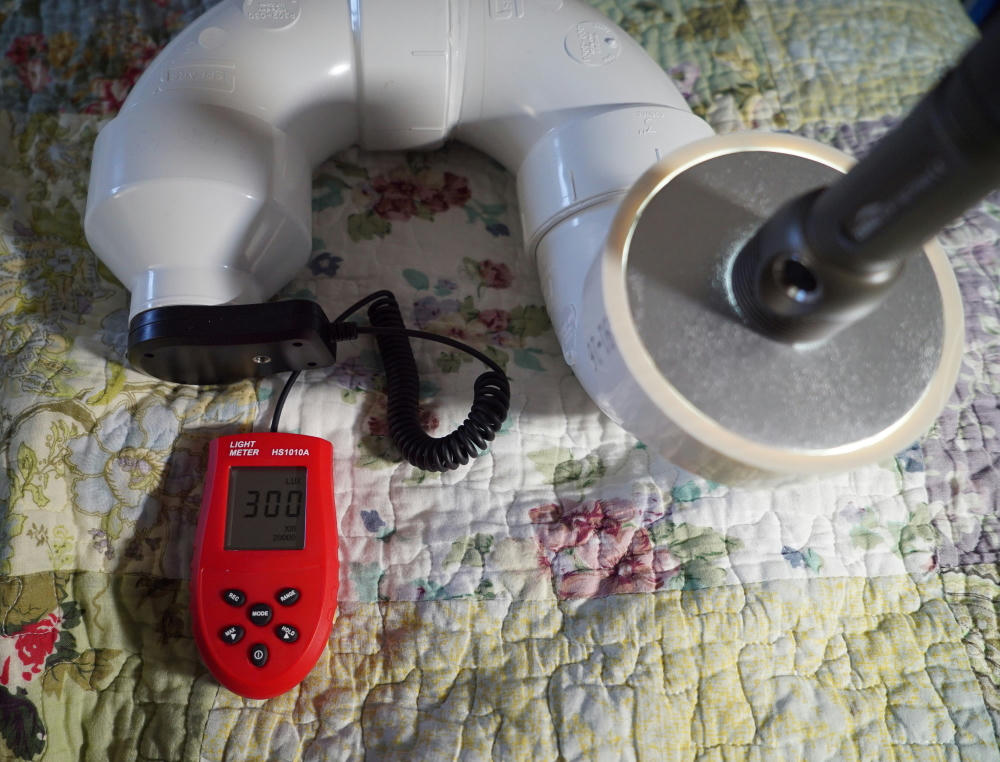
Note that the Samsung INR21700-48G produced very similar turn-on values over 30 seconds (different by only 1% from the Samsung 40T). Furthermore, the following graphs will show that both batteries have similar runtime characteristics. I don’t think the lower continuous current rating of the 48G will make much difference.
Again using the Texas Ace Lumens Tube, I checked the “medium” 583 lumens setting (Zebralight spec):
Turn-on was at 570 lumens (2% difference).
30 seconds at 560 lumens (4% difference).
The Lumens Tube is generally considered accurate to within 5%.
I conclude that Zebralight’s claimed lumens output is accurate.
Runtime Graphs:
Note 1: Because Zebralight’s claimed output levels are close to the Texas Ace Calibrated Lumens Tube, I’ve decided to use Zebralight’s specs on the graphs. Therefore, all lumen values on the graphs are derived from Zebralight’s specs.
Note 2: The SC700d will eventually drop down to a much lower light level (1% or lower) and stay there many more hours - much longer than my patience to run the test. So, the end of the graphs does not mean the light turned off.
First, we will use the Samsung INR21700-40T, which is recommended and sold by Zebralight (where I got mine). This was capacity tested on an Xtar Dragon VP4 Plus, resulting in a capacity of 4,009mAh (right at the manufacturer spec of 4,000mah).
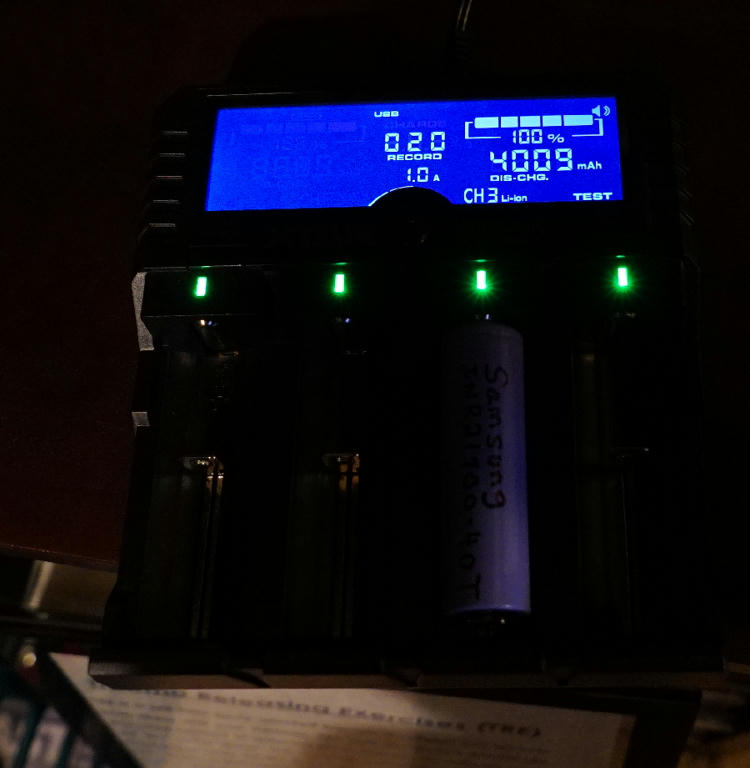
The following graph is for high (3,000 lumens). There was no cooling – the light was placed on the floor-pan of my shower, along with my data logger (REED Instruments SD-1128). Test done at room temp (75F). A large blanket was placed over the glass shower doors, to produce my dark testing cave. Here we see that thermal regulation causes the initial output (3,000 lumens) to quickly dive to about 900 lumens (where it settles). 
Again, at room temp (75 degrees F) on high (3,000 lumens). Here we use active cooling, a clip-on fan pointed at the light. This makes a BIG difference in runtime and lumens. We have a MUCH SHORTER runtime, but a much higher output, settling at about 2,000 lumens. The cost of a continuous 2,000 lumens is a 43 minute runtime. It's nice to know that Zebralights won't just shut down and leave you in the dark. Instead, they will throttle way down and give you plenty of warning time.
Still using the 40T, the SC700d on high, outside at 45 degrees F (7.2C). There were wind gusts, for more active cooling. The variable wind gusts show that the SC700d adjusts its output often.

Outside again, on high (still using the 40T). This time, instead of wind gusts (there were none), I used a clip-on fan outside, with temp at 43 degrees F (6.1C). Seems that a consistent fan blowing on the SC700d allows a much higher output in brightness - with a much shorter runtime (27 minutes).

I'll temporarily switch to the Samsung INR21700-48G, a higher capacity battery, but with a lower continuous amp rating than the 40T.
The difference between the 40T & 48G is:
40T
30A continuous
capacity 4,000 mAh
48G:
9.6A continuous
35A pulse
capacity 4,800 mAh
Here, on high, we get a longer runtime of about 28 minutes (compared to the 40T battery). The 48G was also capacity tested on an Xtar Dragon VP4 Plus (results 4,852mAh). Manufacturer spec 4,800mAh. This was indoors (75 degrees F), no active cooling. 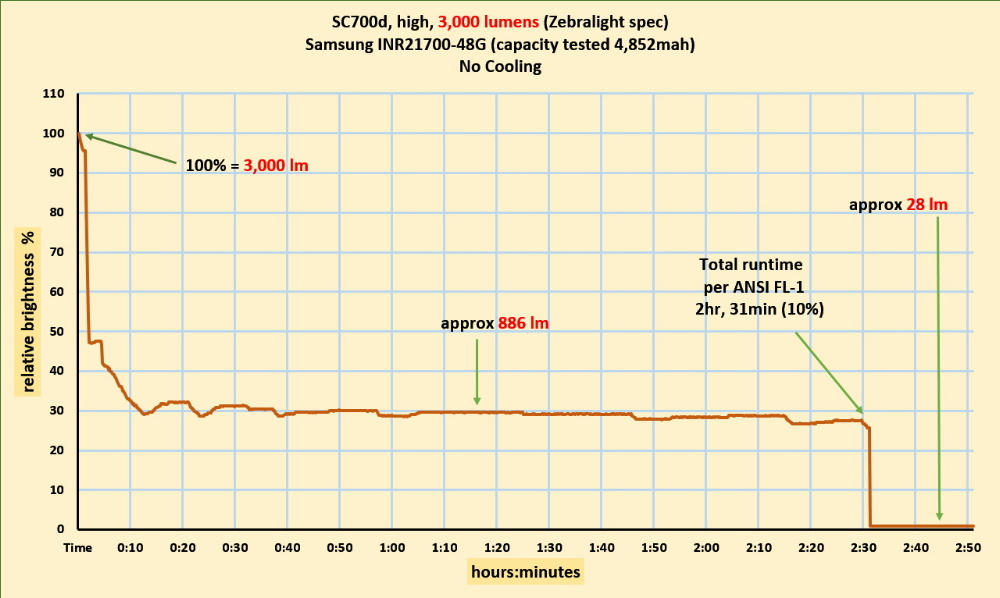
Here’s, on high, the 48G with active cooling at room temp of 75 degrees F (again, a clip-on fan pointed at the light). We get a longer ANSI runtime of a bout 15 minutes (compared to the 40T with cooling), due to the 48G’s higher capacity.
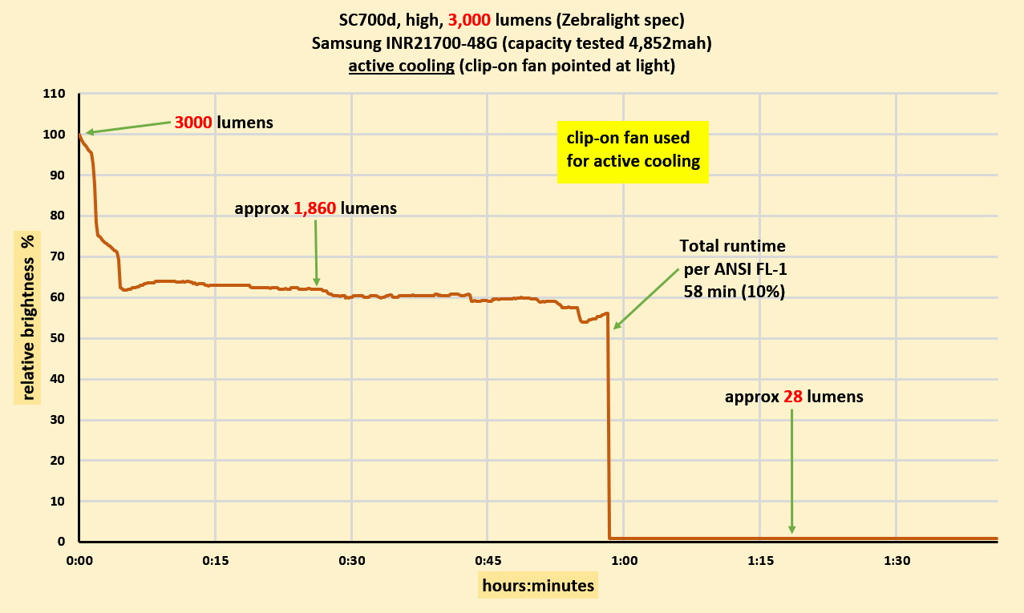
Back to the Samsung 40T, at 945 lumens, no cooling. Test done at room temp (75F).
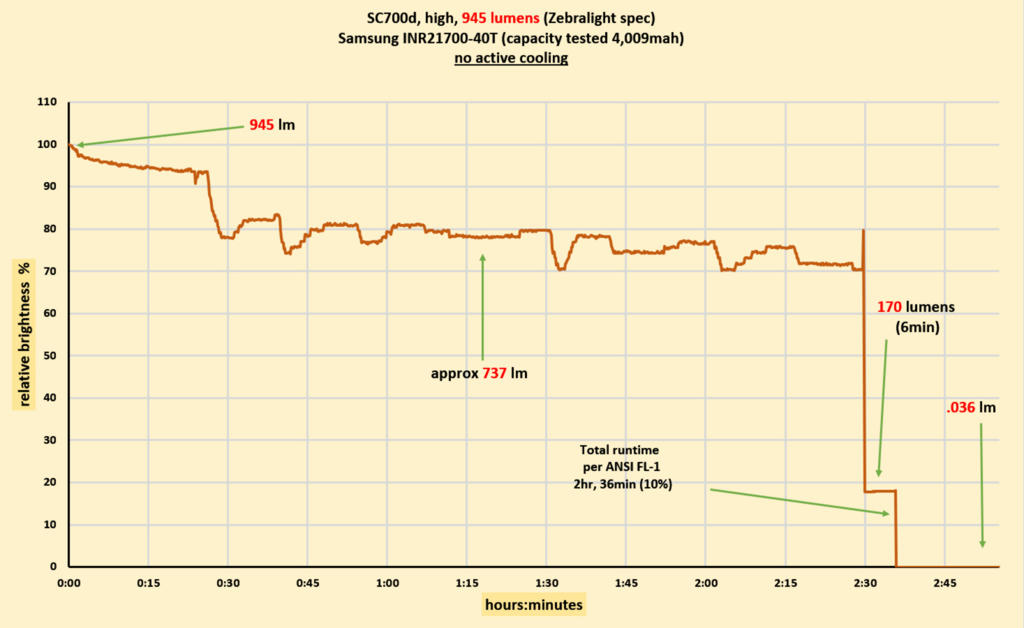
945 lumens with the 40T, with active cooling (clip-on fan pointed at the light). Test done at room temp (75F).
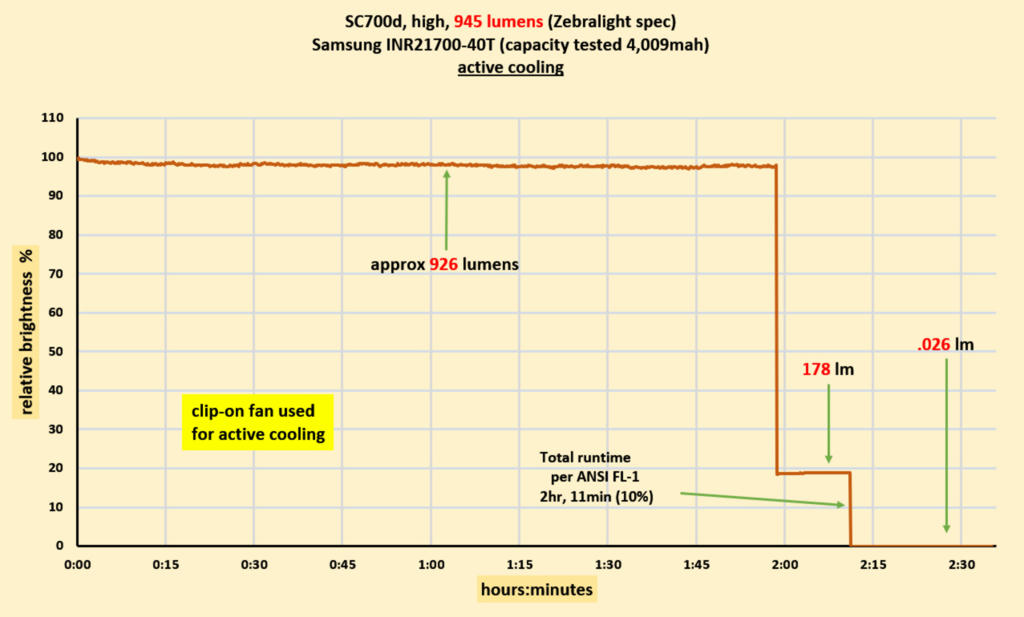
At 192 lumens (M1) with the Samsung 48G. Stable output for 14 hours. Test done at room temp (75F).
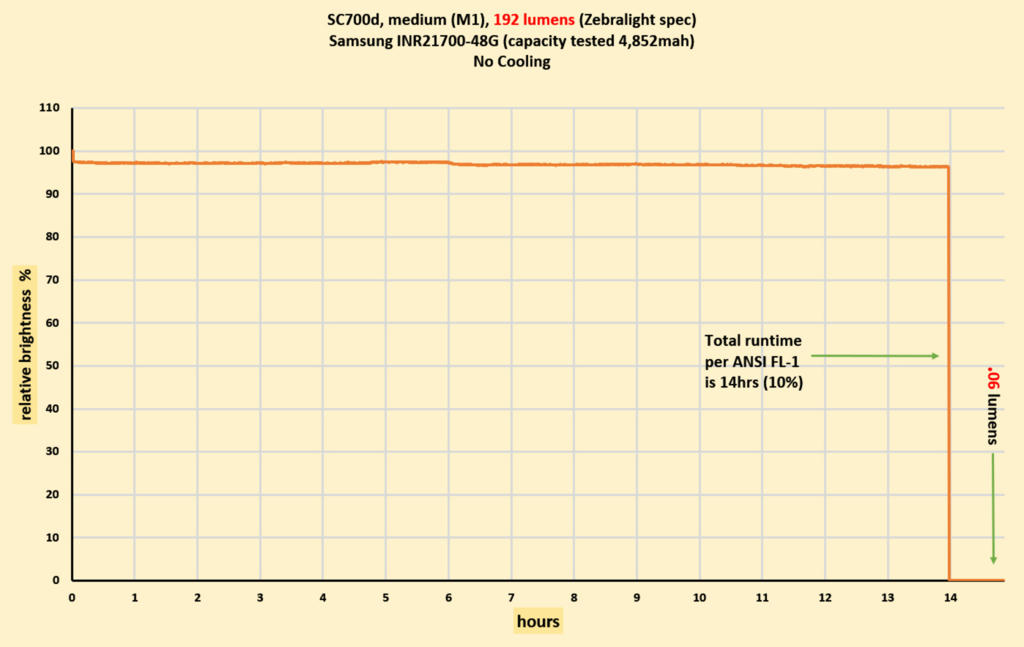
For the last SC700d graph, I used the 583 lumens setting, with the Samsung 48G. This is the highest brightness level that does NOT use thermal regulation (PID). As expected, a relatively flat output (in this case, for 4.3 hours). Test done at room temp (75F).
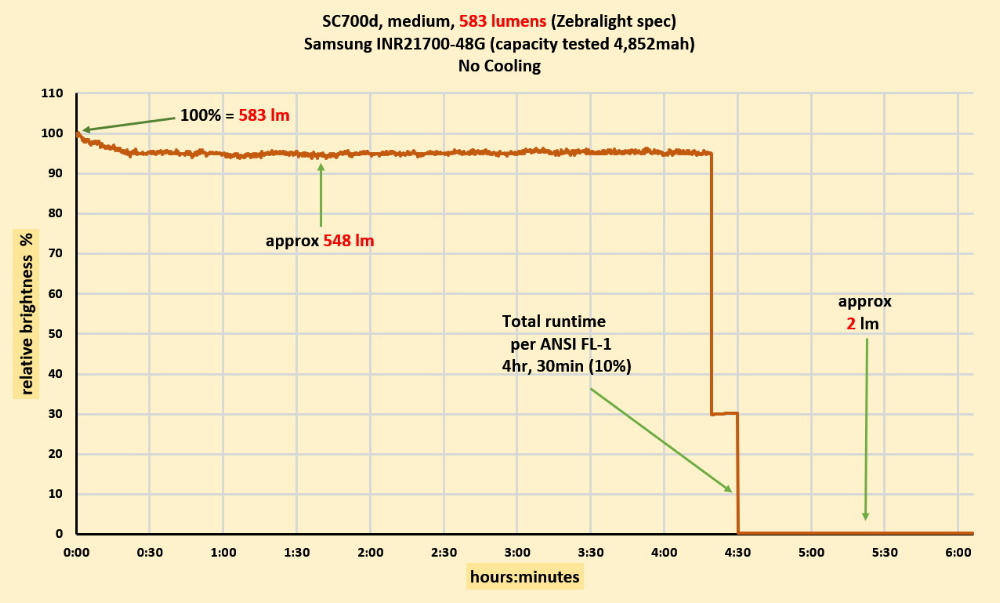
,
NOT SEEN on the SC700d is the thermal hunting/oscillation that was noted on my SC600Fd IV Plus. Note that the graph below and above are at similar brightness levels. What's significant - is the SC600Fd used PID at 557 lm, where the SC700Fd does not at 583 lm.
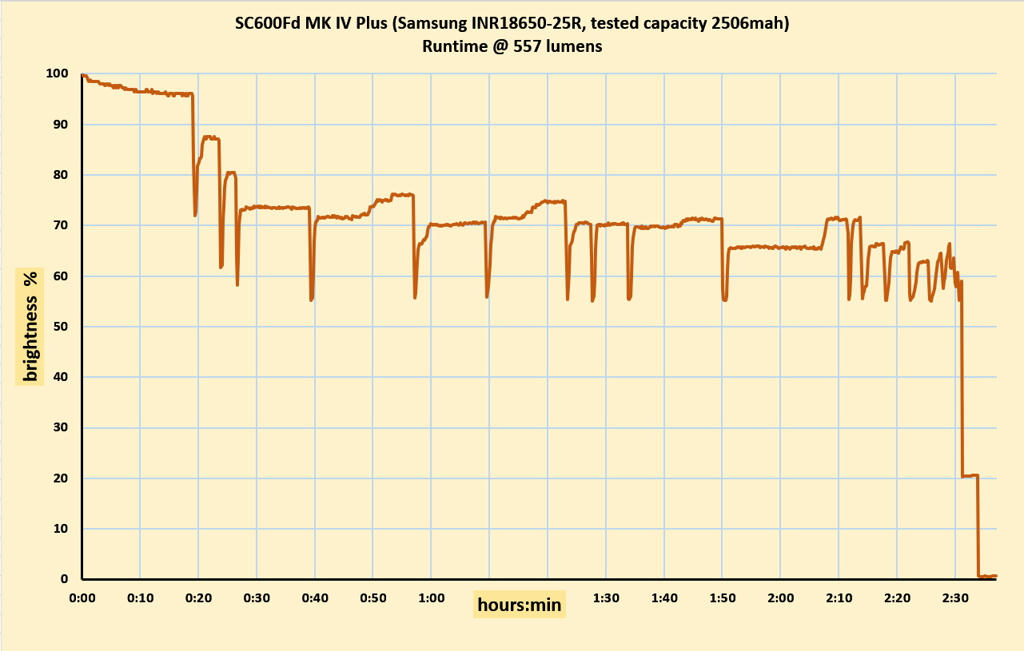
Let's look at temperature readings, at the head and body.
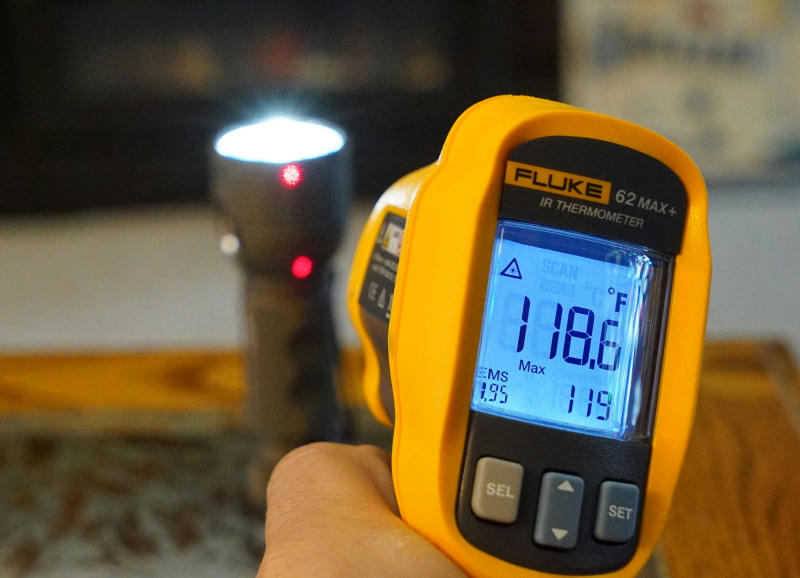
Below we have temperature readings (every minute) over 13 minutes (on high). This is with the default PID setting (out-of-the-box). 115 degrees Fahrenheit at the body was the highest measured. Very warm, but not too hot to hold. Note, the light was placed on a table (tail stand), so there is no active cooling. Test done at room temp (75F).
The two highlighted readings in Celsius are 50/46

The next set of data is with the PID intentionally programmed to its lowest value (-5C). This lowered the highest temperature at the body by about 4 degrees Fahrenheit (from 115F to 111F).
The two highlighted readings in Celsius are 46/44
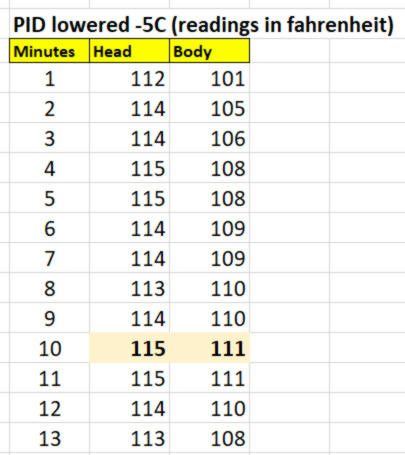
And finally, here's the PID raised to its maximum +5C. At six minutes, the light felt uncomfortably hot to my touch. Of course this is subjective and everyone has there own tolerances to heat. Personally, I'm going to leave mine at -5C.
The two highlighted readings in Celsius are 54/51

PWM
Using an oscilloscope (and optical sensor), I did not see any obvious PWM on the SC700d (as expected). HOWEVER, there was a noticeable large sawtooth waveform on M2 (52 lumens), at 35.7Khz. That's a pretty big swing in output. I did not see this on the other five default brightness levels. DC coupling. Does anyone have theories on why this shows up on only one level? The optical sensor was an OSRAM BPW34S PIN photodiode.
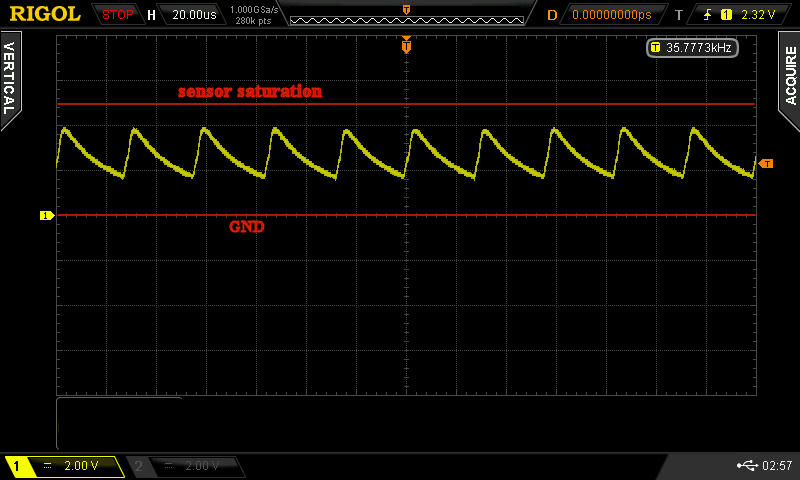
Triple clicking from off activates strobe at 16.5hz (Zebralight spec is19hz).

Current draw on high.
I measured a consistent 8.1 amps at turn-on (high). But WAIT. With this many amps, I'm suspicious there may be resistance in the test leads (and contact points), and that the 8.1A reading could be lower than actual. To check my suspicion, I'll do something a bit unorthodox. Let's see how much the brightness level drops while I'm measuring current. I measured the current again while the light was actually on the Texas Ace Calibrated Lumens Tube. The result from the lumens tube was 2,450 lumens (I get the expected 3,000 lumens with tail cap placed back on). OK, so the Fluke test leads and meter are dropping the brightness level by 18.3%. We can use this value to interpolate current draw. Doing some basic math, if the more realistic current on high is about 10A, then subtracting 18.3% gives us close to my original current reading 8.1A. Therefore, I think 10 amps is a more reasonable estimate on what the light is actually pulling on high. If you search around this forum and YouTube, you'll see that measuring flashlight tail-cap current is a bit science and a bit art.
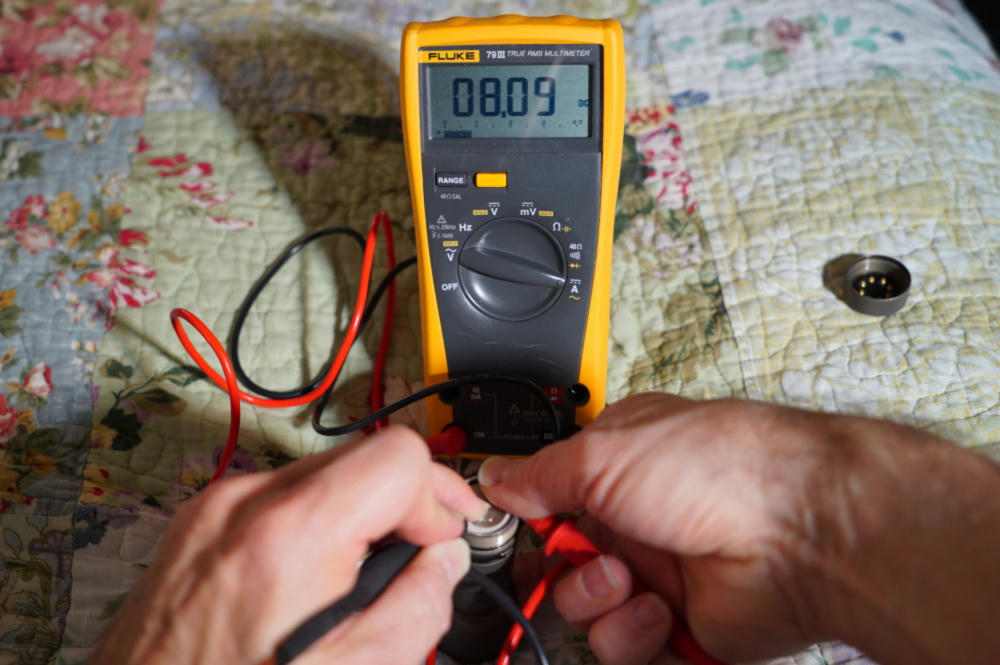
Off Current (parasitic drain):
Measured 24ua (verified with two DMMs).
EDIT UPDATE:
I've discovered one anomaly with the Samsung INR21700-48G. If using the 48G, I noticed that lightly shaking the SC700d can result in the light intermittently turning off or changing to a lower brightness level - as though there's an intermittent connection. I could NOT duplicate this with Zebralight's recommended Samsung 40T. So what's going on? At first glance, it appears both the 40T and 48G are physically the same.
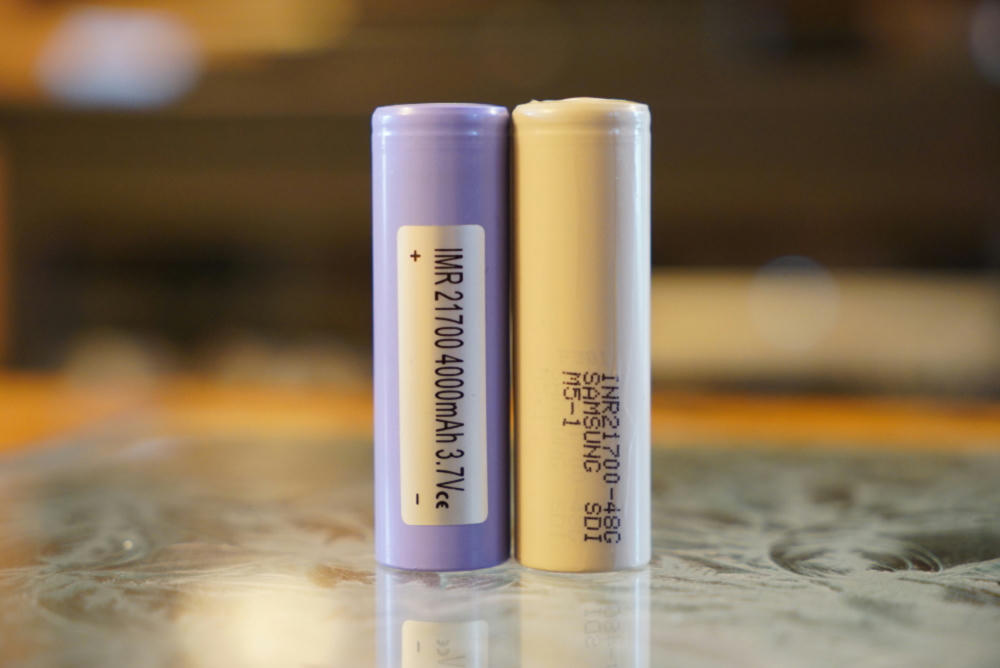
However, further examination reveals that the + terminal on the 48G is much more recessed (lower) than the 40T. Well there's the problem. At the top of the light's battery tube are the six springy pogo-type pins for the positive contact. Those springy pins are pretty short and won't have as much of a solid contact if the batterie's positive contact is lower.
48G on the right.
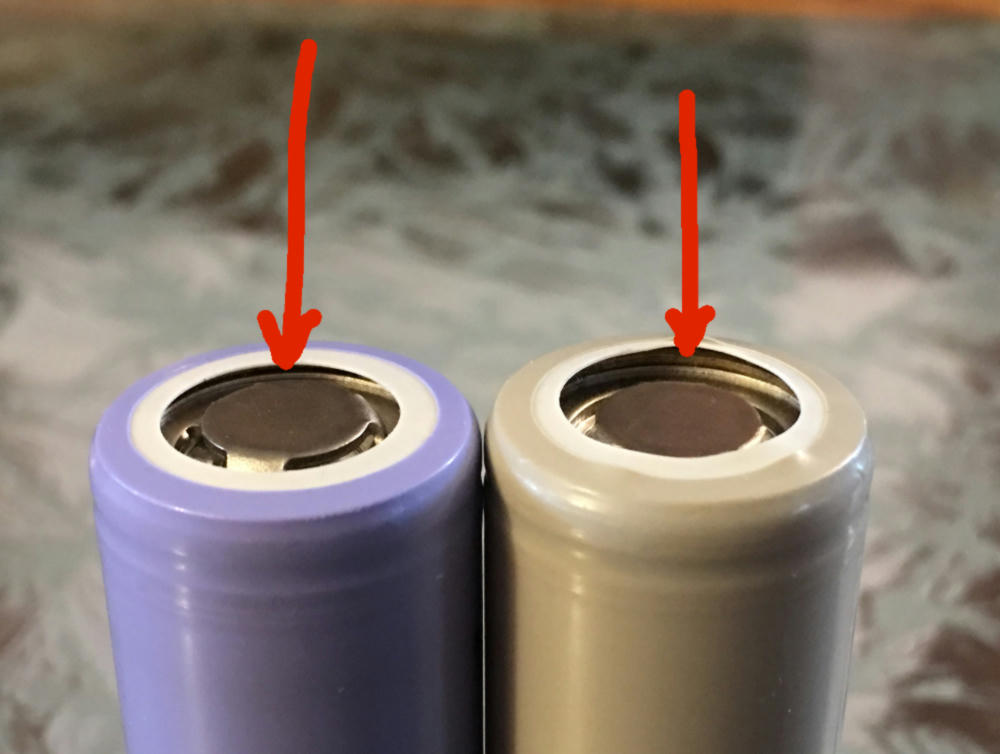
SOLUTION: I added a blob of solder (just the right amount) to the plus terminal of the 48G. I can no longer duplicate the problem. Furthermore, I can now charge the 48G on my Xtar Dragon VP4 Plus without having to use a spacer.
Edit Update: There were several requests for beam shots. Not normally my thing. Ultimately, after several tries to get something that looked the same as it does to my eyes, I think a video worked best. Below, one photo taken of a garage door, which is pretty close to how it looks to my eyes. The amount of spill from the center spot is pretty accurate in the photo. Then there is the YouTube video, which I think shows it best. Yes, there is a slight greenish tint around the center spot.
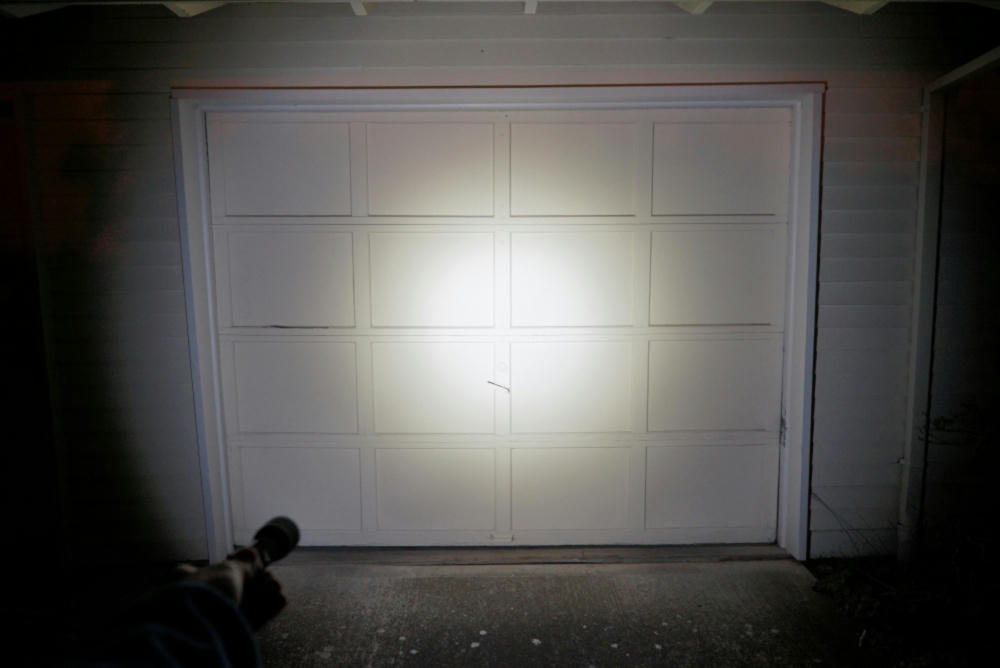
YouTube video:
